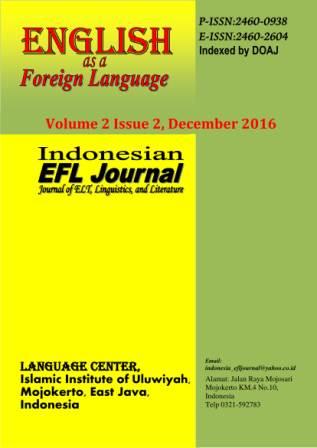The Study of Simplification and Explicitation Techniques in Khaled Hosseini's “A Thousand Splendid Sunsâ€
Abstract
Teaching and learning strategies help facilitate teaching and learning. Among them, simplification and explicitation strategies are those which help transferring the meaning to the learners and readers of a translated text. The aim of this study was to investigate explicitation and simplification in Persian translation of novel of Khaled Hosseini's “A Thousand Splendid Sunsâ€. The study also attempted to find out frequencies of simplification and explicitation techniques used by the translators in translating the novel. To do so, 359 sentences out of 6000 sentences in original text were selected by systematic random sampling procedure. Then the percentage and total sums of each one of the strategies were calculated. The result showed that both translators used simplification and explicitation techniques significantly in their translation whereas Saadvandian, the first translator, significantly applied more simplification techniques in comparison with Ghabrai, the second translator. However, no significant difference was found between translators in the application of explicitation techniques. The study implies that these two translation strategies were fully familiar for the translators as both translators used them significantly to make the translation more understandable to the readers.
References
Baker, M. (1993). Corpus Linguistics and Translation Studies: Implications and Applications. In: M. Baker, G. Francis & E. Tognini-Bonelli (eds.) (1993), Text and Technology. In Honor of John Sinclair, pp. 233-250.
Baker, M. (1995). Corpora in translation studies: An Overview and Some Suggestions for Future Research. Target 7(2): 223-243.
Baker, M. (1996). Corpus-based Translation Studies: The Challenges that Lie Ahead. In: H. Somers (Eds.): Terminology, LSP and Translation, Amsterdam / Philadelphia: John Benjamins, pp.175-186
Baker, M. (1998). Encyclopedia of Translation Studies. London and New York: Routledge.
Blum-Kulka, S. (1986). Shifts of Cohesion and Coherence in Translation, in L. Venuti (ed.) (2004), The Translation Studies Reader, 2nd Edition. London and New York: Routledge, pp. 290–305.
Chesterman, A. (2000). A Causal Model for Translation Studies. In M. Olohan, (Ed.). Intercultural Faultlines. Research Methods in Translation Studies 1. Textual and Cognitive Aspects..Manchester: St Jerome, pp. 15-27
Chesterman, A. (2004). Beyond the particular. In Anna Mauranen and Pekka Kujamäki (eds), Translation Universals. Do they Exist? Amsterdam and Philadelphia: Benjamins. 33–50.
Frawley, W. (1984). Translation: Literary, Linguistic and Philosophical Perspectives. NJ: University of Delaware Press.
Ghabrai, M (2007). A Thousand Splendid Suns. Tehran: Sales Publication.
Hosseini, K. (2007). A Thousand Splendid Suns. New York: River head books.
Klaudy, K. (1998). Explicitation, in M. Baker and K. Malmkjær (Eds), Routledge Encyclopedia of Translation Studies, 1st Edition. London and New York: Routledge,pp. 80–84.
Klaudy, K. (2001). The Asymmetry Hypothesis. Testing the Asymmetric Relationship between Explicitations and Implicitations, paper presented to the Third International Congress of European Society for Translation Studies. Copenhagen.
Klaudy, K. & Károly, K. (2007). Implicitation in Translation: Empirical Evidence for Operational Asymmetry in Translation. Across Languages and Cultures. 6(1): 3-28.
Kruger, A. (1997). The translator as Agent of Reconciliation: Translating an Eye-witness Report in a Historical text. in K. Simms (ed.) Translating Sensitive Texts: Linguistic aspects, Amsterdam and Atlanta, GA: Rodopi, pp. 77–86.
Krejcie, R. & Morgan, D. (1970). Determining sample size for research activities. Educational and Psychological Measurement, 30(1):607-610.
Laviosa, S. (1998). Universals of Translation. In M. Baker and K. Malmkjær (eds) Routledge Encyclopedia of Translation Studies, 1st Edition, London and New York: Routledge, pp. 288–91.
Laviosa, S. (2002). Corpus-based Translation Studies: Theory, Findings, Applications. Amsterdam: Rodopi.
Laviosa-Braithwaite, S. (1996). The English Comparable Corpus (ECC): a Resource and a Methodology for the Empirical Study of Translation. (Unpublished doctoral dissertation). UMIST, UK.
Levy,J. (2000) Translation as a Decision Process.In L. Venuti (ed) The Translation Studies Reader.London: Routledge,pp. 148-159.
Mauranen, A. (2004). Corpora, Universals and Interference. In Anna Mauranen and Pekka Kujamäki (eds) Translation Universals. Do they Exist?, Amsterdam and Philadelphia: Benjamins. 65–82.
Munday, J. (1998). A Computer-assisted Approach to the Analysis of Translation Shifts. Meta 43(4): 542-556.
Nida, E. A. (1964). Toward a Science of Translating with Special Reference to Principles and Procedures Involved in Bible Translating. Leiden: E. J. Brill.
Petrilli, s. (1992). Translation semiotics and Ideology. TTR: Traduction, Terminologie, Redaction, Vol 5 (1): 233-264.
Saadvandian, Z. (2008). A Thousand Splendid Suns. Tehran:Negarestan book.
Toury, G. (1995). In Search of a Theory of Translation. Tel Aviv: The Porter Institute for Poetics and Semiotics.
Vinay, J. & Darbelnet, J. (1958). A Methodology for Translation. Trans. J. C. Sager and M.-J. Hamel, in L. Venuti (ed.) (2004). The Translation Studies Reader, 2nd Edition, London and New York: Routledge, pp. 128–37.
Copyright (c) 2016 Indonesian EFL Journal: Journal of ELT, Lingusitics, and Literature

This work is licensed under a Creative Commons Attribution-ShareAlike 4.0 International License.
All rights reserved.
this publication may be reproduced, stored in a retrieval system, or transmitted
in any form or by any means, electronic, mechanical, photocopying, recording.




